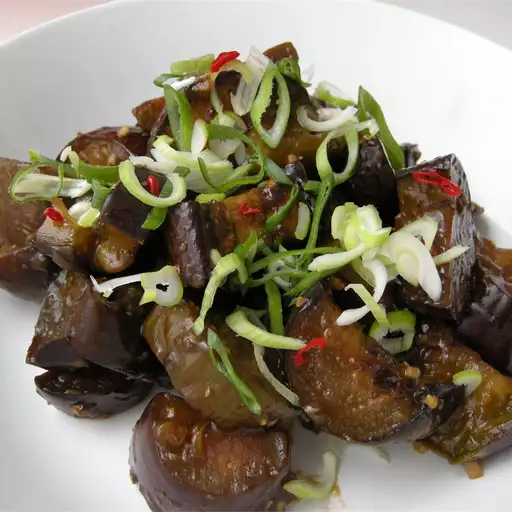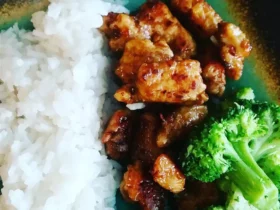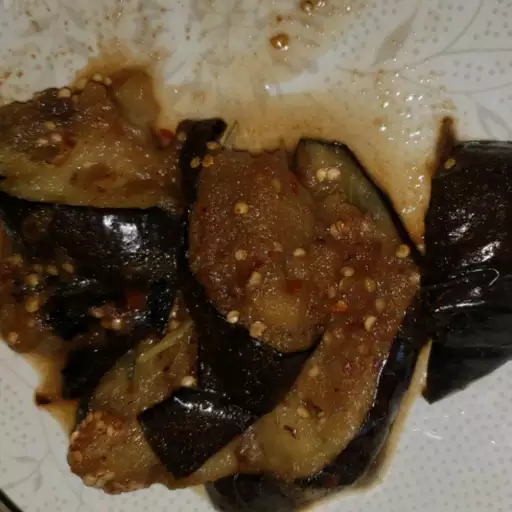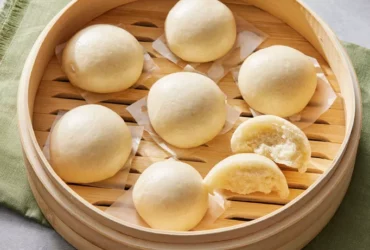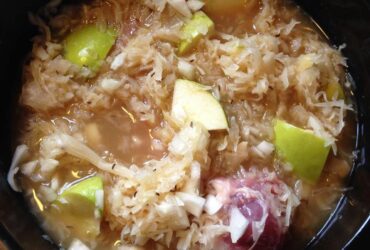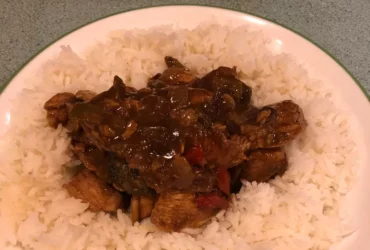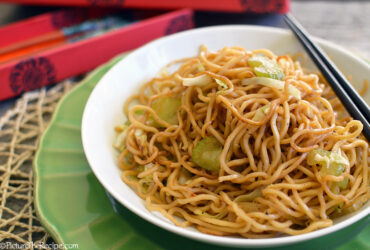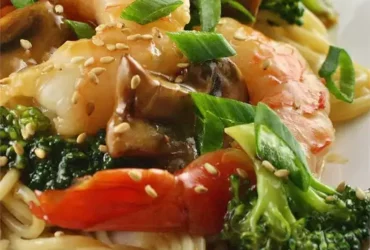Ingredients
Main Ingredients
The key to this dish lies in its ingredients, and we’ll break down the main components that come together to create a truly unforgettable taste experience.
Main Ingredients:
- Chinese Eggplant: This is the star of the show. Chinese eggplant is typically smaller and more delicate than the larger globe eggplants commonly found in Western markets. It has a thinner skin, making it ideal for this recipe.
- Ginger: Fresh ginger adds a depth of flavor that pairs perfectly with the sweetness of the eggplant. You’ll want to use about 2-3 inches of fresh ginger, peeled and grated.
- Garlic: Ah, garlic – the unsung hero of many Asian recipes. For this dish, you’ll need about 4-5 cloves of garlic, minced. Yes, it’s a lot, but trust us, it makes all the difference.
- Shaoxing Wine (or Dry Sherry): This is an essential component in traditional Chinese cooking. You can find Shaoxing wine at most Asian markets or substitute with dry sherry if you can’t find it. Use about 2 tablespoons for this recipe.
- Soy Sauce: We’re using a light soy sauce here to add depth without overpowering the other flavors. Use about 1 tablespoon of light soy sauce.
- Oyster Sauce (optional): If you want an authentic, umami flavor, add 1-2 tablespoons of oyster sauce to your marinade. However, feel free to omit this ingredient if you’re a vegetarian or don’t have it on hand.
- Scallions: Use about 4-5 scallions, chopped for garnish. You’ll also need some oil and salt for cooking the eggplant.
The marinade is where the magic happens. It’s a mixture of the above ingredients that you’ll brush onto your eggplant before roasting in the oven. The acidity from the Shaoxing wine helps break down the eggplant’s cell walls, while the ginger and garlic add an aromatic depth.
Sliced eggplant (preferably Chinese or Japanese), garlic cloves, soy sauce, oyster sauce (optional), sugar, vegetable oil
The key ingredients for this recipe are relatively simple and can be found at most well-stocked supermarkets or Asian markets. The star of the dish, sliced eggplant, comes in two main varieties that work particularly well for this recipe: Chinese and Japanese.
Chinese eggplant, also known as aubergine, is characterized by its longer, narrower shape, with a smoother skin that’s less prickly than some other varieties. It has a slightly sweet flavor profile, which pairs nicely with the savory elements of the garlic sauce.
Japanese eggplant, on the other hand, has a slightly sweeter and nuttier flavor. Its flesh is also typically more tender than Chinese eggplant, making it an excellent choice for this recipe as well. Both varieties work beautifully in this dish, so feel free to choose based on your personal preference or what’s available at your local market.
Garlic cloves are another fundamental component of the garlic sauce, adding a pungent flavor that will dominate but ultimately enhance all the other ingredients. Make sure to use fresh, high-quality garlic for the best results.
The soy sauce provides a salty depth and umami flavor to balance out the sweetness from the eggplant and sugar. Use a high-quality light or dark soy sauce to add richness without overpowering the dish.
Oyster sauce is optional but adds an incredible savory, slightly sweet element that’s essential for some people’s taste in Chinese cooking. Feel free to skip it if you can’t find it or prefer not to use animal-based ingredients; however, if you do decide to include it, be sure to only use the amount called for in this recipe.
Sugar is added at a small amount to balance out the flavors without overpowering them. It enhances the natural sweetness of the eggplant and helps create a harmonious flavor profile.
Vegetable oil serves as our medium for sautéing the aromatics and creating that rich, velvety sauce we all love in this recipe. You can also use peanut or grapeseed oil if you prefer. Whatever type of oil you choose, be sure to use a neutral-tasting one that won’t add an overpowering flavor to your dish.
Cooking Essentials
The success of any recipe largely depends on the quality and freshness of its ingredients. For the Chinese Eggplant with Garlic Sauce recipe, you will need the following essential ingredients:
- 2 medium eggplants
- 3 cloves garlic
- 1/4 cup vegetable oil
- 1 tablespoon soy sauce
- 1 tablespoon oyster sauce (optional)
- 1 teaspoon sesame oil
- 1 teaspoon sugar
- 2 tablespoons cornstarch
- 1 cup chicken or vegetable broth, warmed
- Salt and pepper to taste
- Scallions, chopped (for garnish)
In terms of cooking essentials, you will need a few basic tools and techniques to achieve the desired result. Here are some key considerations:
- Choose the right eggplant variety: For this recipe, it’s best to use Chinese or Japanese eggplants, which have a slender shape and tender skin.
- Prepare the eggplant correctly: Slice the eggplant into 1-inch thick rounds, leaving the stem intact. This will help the eggplant hold its shape during cooking.
- Select the right cooking oil: Use vegetable oil with a high smoke point, such as peanut or avocado oil, to prevent it from burning or smoking when heated.
- Don’t overcook the garlic: Cook the garlic for just 1-2 minutes, until fragrant and softened. This will help preserve its flavor and aroma.
To make the recipe more accessible, here are some variations you can try:
- Add protein: Introduce cooked chicken, beef, or tofu to make the dish more substantial.
- Experiment with sauces: Try using different types of soy sauce or oyster sauce for a unique flavor profile.
- Adjust the spice level: Add red pepper flakes or sriracha to increase the spiciness to your liking.
Rice vinegar, cornstarch mixture, chopped green onions for garnish
The ingredients required to make the Chinese Eggplant with Garlic Sauce recipe are as follows:
For the eggplants, you will need:
- 2 large eggplants
For the garlic sauce, you will need:
- 4 cloves of garlic, minced
- 1/4 cup of soy sauce
- 2 tablespoons of vegetable oil
- 1 tablespoon of cornstarch
- 2 tablespoons of rice vinegar
For the garnish:
- Chopped green onions for garnish
The ingredients used in this recipe are commonly found in Chinese cuisine, and their combination helps to create a savory and slightly sweet flavor profile. The eggplant serves as the main ingredient, providing a meaty texture, while the garlic sauce adds depth and umami flavor.
The use of soy sauce, vegetable oil, and cornstarch mixture creates a thick and sticky sauce that coats the eggplant. The addition of rice vinegar gives the dish a tangy and slightly sour taste, which helps to balance out the flavors.
Chopped green onions are used as a garnish to add a pop of color and freshness to the dish. They also provide a subtle onion flavor that complements the other ingredients.
Instructions
Preparation
Instructions for preparing the Chinese Eggplant with Garlic Sauce Recipe involve several steps that require attention to detail and careful planning.
To begin, it is essential to choose fresh eggplants and have all the necessary ingredients ready before starting the cooking process. The recipe calls for three large eggplants, which should be trimmed of any stems and cut into 1-inch cubes.
Next, prepare the garlic sauce by mincing two cloves of garlic in a food processor until finely chopped. Add one tablespoon of vegetable oil to the processor and blend well. Then, add four tablespoons of soy sauce, one teaspoon of sugar, and one tablespoon of rice vinegar, mixing until smooth.
Mix in a pinch of salt and pepper to taste, then set the garlic sauce aside for later use. While the eggplant is cooking, prepare the garnish by thinly slicing three green onions and setting them aside for topping the dish.
Heat four tablespoons of vegetable oil in a large skillet or wok over medium-high heat until hot. Carefully add the eggplant cubes to the pan and cook, stirring frequently, for five minutes or until tender and lightly browned on all sides.
Transfer the cooked eggplant from the skillet to a serving platter or individual plates. Return the remaining oil to the skillet and pour in the garlic sauce, allowing it to simmer and thicken slightly for two minutes. Then, spoon the sauce over the eggplant cubes, garnish with sliced green onions, and serve immediately.
Before serving, make sure that all ingredients are ready and within reach to prevent delays during preparation. Additionally, ensure that any utensils or cookware used in preparing the dish are clean and sanitized to maintain food safety standards.
Throughout the cooking process, keep a close eye on the heat level and adjust as necessary to avoid burning or overcooking any components of the recipe. It is also crucial to use fresh ingredients and follow proper storage guidelines for leftovers to ensure that the dish remains fresh and enjoyable throughout its shelf life.
The attention to detail required in preparing this recipe allows for a balanced blend of flavors, textures, and presentation that will delight even the most discerning palates. By following these instructions carefully, you can create an authentic Chinese Eggplant with Garlic Sauce dish that is sure to impress your family and friends.
Peel the garlic and mince it finely; set aside. Cut the eggplant into 1inch slices to reduce bitterness.
To prepare the ingredients for this delectable Chinese Eggplant with Garlic Sauce recipe, we must first focus on two crucial components: the eggplant and the garlic.
The eggplant, a key ingredient in this dish, can be somewhat bitter if not prepared correctly. To minimize its bitterness, it is essential to cut it into 1-inch slices before using it in the recipe. This simple yet effective step will help bring out the natural sweetness of the eggplant and enhance the overall flavor profile of the dish.
Once we have our eggplant sliced, it’s time to turn our attention to the garlic. Like the eggplant, garlic plays a pivotal role in this recipe, adding an unparalleled depth and richness to the sauce. To extract its full potential, we must peel the garlic cloves and mince them finely. This meticulous process is crucial as it ensures that the garlic is evenly distributed throughout the dish, releasing its aromatic properties and complementing the flavors of the other ingredients.
By carefully attending to these initial steps – slicing the eggplant and peeling and mincing the garlic – we lay a solid foundation for this Chinese Eggplant with Garlic Sauce recipe. It is through such attention to detail that we can create a truly unforgettable culinary experience, one that showcases the harmonious union of flavors and textures in perfect harmony.
Cooking Method
To cook the Chinese Eggplant with Garlic Sauce, follow these detailed instructions.
Cooking Method
Step 1: Prepare the Ingredients
- Purchase 2 medium-sized eggplants and cut them into 1-inch pieces.
- Mince 3 cloves of garlic and chop 1 tablespoon of fresh ginger.
- Cut 1 small onion into thin slices and separate 1 cup of vegetable oil into two parts.
Step 2: Prepare the Sauce
- In a bowl, whisk together 2 tablespoons of soy sauce, 2 tablespoons of oyster sauce (optional), and 1 tablespoon of sugar.
- Add 2 cloves of minced garlic, 1 teaspoon of grated ginger, and 1 tablespoon of cornstarch to the bowl.
Step 3: Cook the Eggplant
- In a wok or large skillet, heat 1/2 cup of vegetable oil over medium-high heat.
- Add the eggplant pieces and cook until they turn light brown, about 3-4 minutes. Remove them from the pan and set aside.
Step 4: Cook the Sauce
- In the same wok or skillet, add the remaining 1/2 cup of vegetable oil over medium heat.
- Pour the sauce mixture into the pan and stir until it thickens, about 2-3 minutes.
- Add the cooked eggplant pieces back to the pan and toss them in the garlic sauce to coat evenly.
Step 5: Serve the Dish
- Transfer the Chinese Eggplant with Garlic Sauce to a serving platter or individual plates.
- Garnish with chopped green onions and serve immediately.
Enjoy your delicious Chinese Eggplant with Garlic Sauce!
Heat oil in a wok or frying pan over high heat until hot, then stirfry the minced garlic for 30 seconds.
To begin making this delicious Chinese Eggplant with Garlic Sauce recipe, it’s essential to follow a series of instructions that ensure each component is prepared perfectly and cooked to perfection.
Step 1: Prepare the Ingredients
The first step involves preparing all the necessary ingredients for the recipe. This includes:
- Eggplant, preferably of a slender variety (like Chinese or Japanese eggplant)
- Minced garlic, which can be either fresh or store-bought
- Aromatic ginger, typically grated or minced
- Soy sauce – used for flavor and to achieve that distinct Chinese taste
- Oyster sauce – an optional ingredient but highly recommended for its rich savory flavor
- Shaoxing wine (or dry sherry) – another key component of traditional Chinese sauces, offering a depth of flavor
- Water or vegetable stock – used to achieve the perfect consistency of the sauce
- Purple or green chilies for those who prefer a spicy kick in their dish
- Sugar, an essential element that balances out the saltiness and helps develop the flavor
- Scallions – green onions used to garnish the finished product, adding a pop of color and freshness
Step 2: Prepare the Eggplant
Once all ingredients are ready:
- Cut the eggplant into your desired shape. Traditionally, Chinese eggplants are cut in long strips to mimic their natural shape.
- Place them on a baking sheet or tray lined with paper towels or clean kitchen towel to draw out excess moisture and help prevent sogginess during cooking.
Step 3: Cook the Eggplant
After preparing the eggplant, it’s time for the most crucial step – cooking. This involves:
- Heat oil in a wok or frying pan over high heat until hot.
- Stir-fry the minced garlic for 30 seconds to release its aroma and prevent burning, which can give an unpleasant flavor.
- Add the prepared eggplant to the pan, either directly to the oil or by adding a bit of oil first. This helps cook the eggplant evenly without sticking it together.
- Stir-fry the eggplant constantly until it turns tender and slightly caramelized. The exact time can vary based on your personal preference for texture.
Step 4: Prepare the Garlic Sauce
After the eggplant is cooked to perfection:
- Mix all the sauce ingredients together in a small bowl. Start with the soy sauce, oyster sauce, Shaoxing wine (or dry sherry), and sugar.
- Slowly pour in water or vegetable stock until you achieve the desired consistency for your sauce. Traditionally, Chinese sauces are thick but not too dense.
- Add minced ginger to the sauce mixture if using fresh, as it will start breaking down its flavors.
Step 5: Combine and Serve
Once you have both the cooked eggplant and the garlic sauce ready:
- Pour the prepared garlic sauce over the stir-fried eggplant in a wok or pan.
- Mix everything together so that each piece of eggplant is coated with the flavorful sauce.
- Add chilies (if using) for an extra kick and garnish with scallions for freshness and visual appeal.
Serve Warm or Reheat as Needed
The Chinese Eggplant with Garlic Sauce recipe can be served immediately after preparation, either in a single serving portion or family-style for everyone to share. If you find yourself with leftovers (and it’s unlikely given the dish’s popularity), reheat the eggplant in the pan over low heat and add a bit of oil if needed.
Sauce Preparation
- To prepare the sauce for the Chinese Eggplant with Garlic Sauce recipe, follow these steps carefully.
- First, in a small bowl, combine 2 tablespoons of vegetable oil, 3 cloves of minced garlic, and 1 tablespoon of grated ginger. Mix well to ensure the flavors are evenly distributed.
- Next, in a separate wok or large skillet, heat 2 tablespoons of vegetable oil over medium-high heat. Add the eggplant slices and cook for about 3-4 minutes on each side, until they’re tender and lightly browned.
- In another small bowl, whisk together 1 tablespoon of cornstarch, 2 tablespoons of soy sauce, 2 tablespoons of rice vinegar, 1 teaspoon of sugar, and 1/4 teaspoon of red pepper flakes. This mixture will be the base for our sauce.
- Add the garlic-ginger mixture to the wok or skillet with the cooked eggplant slices. Stir-fry for about a minute, until the flavors are well combined.
- Pour the cornstarch-soy sauce mixture into the wok or skillet and stir constantly to prevent lumps from forming. Bring the mixture to a boil, then reduce the heat to low and simmer for about 2-3 minutes, until the sauce thickens slightly.
- Taste and adjust the seasoning as needed by adding more soy sauce, sugar, or red pepper flakes. Serve the Chinese Eggplant with Garlic Sauce hot over steamed rice or noodles, garnished with chopped scallions if desired.
Whisk together soy sauce, oyster sauce (if using), sugar, and rice vinegar to make the garlic sauce.
- To begin making the garlic sauce for the Chinese Eggplant with Garlic Sauce Recipe, you need to whisk together several essential ingredients in a bowl.
- Start by combining Soy Sauce, which serves as the primary flavor component of the sauce, providing a salty and umami taste. The amount used is crucial, so be sure to measure it carefully.
- If you’re using Oyster Sauce, add it to the bowl as well. Oyster sauce is an optional ingredient, but it does contribute a rich, savory flavor that many people enjoy in Chinese cuisine.
- Next, whisk together some Sugar to balance out the savory flavors of the soy and oyster sauces. The amount of sugar may vary depending on personal taste preferences.
- Finally, add Rice Vinegar to the mixture, which will help to create a harmonious balance between sweet and sour flavors in the garlic sauce.
- Once all these ingredients are well combined, you’ll have a smooth, savory Garlic Sauce ready to be served over Chinese eggplant slices or other stir-fry dishes.
Tips & Variations
Authenticity Note
- The authenticity note for the Chinese Eggplant with Garlic Sauce recipe highlights the importance of using authentic ingredients to create an authentic dish.
- For a truly authentic experience, it’s recommended that you use long or slender eggplants, which are commonly found in Asian markets.
- The eggplants should be peeled and cut into 1-inch cubes before marinating them in a mixture of soy sauce, Shaoxing wine, and sesame oil for at least 30 minutes to allow the flavors to penetrate deep into the flesh.
- A note on the garlic sauce is that it’s typically made with roasted garlic, which gives the dish its distinct flavor and aroma.
- To make the garlic sauce, simply roast 4-6 cloves of garlic in a dry pan over medium heat until they’re caramelized and fragrant, then blend them into a smooth paste with some soy sauce, oyster sauce, and Shaoxing wine.
- The sauce should be thick and syrupy, but not too thick to coat the back of a spoon – this will ensure that it adheres evenly to the eggplant pieces during cooking.
- As for variations, you can customize the recipe to suit your taste by adding other ingredients such as diced bell peppers or mushrooms, which will add texture and flavor to the dish.
- An alternative method is to use a combination of vegetable oil and Szechuan peppercorns for added depth and aroma – simply heat them in a pan before adding the eggplant pieces and garlic sauce.
- For an added kick, you can also serve the eggplant with some red chili peppers or diced scallions on top, which will add a spicy kick to the dish.
- To make the recipe more substantial, you can serve it with steamed rice or noodles, or even add some protein such as beef or pork for added texture and flavor.
This recipe is an adaptation inspired by traditional Chinese stirfries. However, authentic Sichuan province eggplant recipes often use fermented bean paste (doubanjiang), not oyster sauce.
If you’re looking to try different variations on this Chinese eggplant recipe, there are several options you can explore to add more flavor and depth to the dish.
One variation that would be more authentic to traditional Sichuan province recipes is using fermented bean paste (doubanjiang) instead of oyster sauce. Doubanjiang has a stronger umami flavor and a spicy kick, which pairs well with the eggplant and garlic in this recipe.
You can also experiment with different types of protein to add to your eggplant stir-fry. Some options include diced chicken, beef, or tofu for a vegetarian version. Simply cook the protein separately before adding it to the eggplant and sauce, or you can cook everything together for a hearty one-pot meal.
If you want to make this recipe even spicier, you can add some red pepper flakes or sliced jalapeños to the garlic sauce. You could also try using different types of hot sauce, such as sriracha or hoisin sauce, to give it an extra kick.
For a vegan version of this recipe, you can replace the oyster sauce with a commercial brand that is vegan-friendly or by making your own version using ingredients like soy sauce and sugar. You may also want to omit the fish sauce if you’re not using any animal-derived products in your diet.
To make this recipe more substantial, you could serve it over rice or noodles. This will help soak up some of the flavorful garlic sauce and make it a more filling meal. Alternatively, you can add some roasted vegetables, like broccoli or bell peppers, to make the dish even more nutritious.
Cooking Tips
The Chinese Eggplant with Garlic Sauce recipe is a flavorful and aromatic dish that can be customized to suit various tastes and preferences. Here are some tips and variations to enhance your cooking experience:
- Choose the right eggplants: For this recipe, it’s best to use small or medium-sized Chinese or Japanese eggplants. These varieties have a more delicate flavor and tender texture than larger American eggplants.
- Cut the eggplant correctly: Cut the eggplants into 1-inch cubes or slices, depending on your preference. This will help them cook evenly and quickly.
- Use the right garlic sauce: The garlic sauce is a key component of this dish. You can use store-bought garlic sauce or make your own by blending together minced garlic, soy sauce, hoisin sauce, rice vinegar, and cornstarch.
Variations
- Spicy Version: Add diced jalapenos or red pepper flakes to the garlic sauce for an extra kick of heat.
- Crispy Version: Coat the eggplant cubes with cornstarch and deep-fry them until crispy before adding them to the garlic sauce.
- Vegetarian Version: Replace the protein with tofu, tempeh, or seitan for a meatless option.
- Spicy-Sweet Version: Add diced pineapple or bell peppers to the garlic sauce for a sweet and spicy flavor combination.
Additional Tips
- Don’t overcook the eggplant: The eggplant should be cooked until tender but still crisp. Overcooking will result in a mushy texture.
- Use high-quality ingredients: Fresh and high-quality garlic, ginger, and soy sauce will give your dish more depth of flavor.
This Chinese Eggplant with Garlic Sauce recipe is a versatile and delicious dish that can be customized to suit various tastes and preferences. With these tips and variations, you can create a flavorful and aromatic meal that’s sure to please even the most discerning palates.
For extra crispy eggplant, coat the slices lightly with cornstarch before frying.
Cooking Chinese eggplant with garlic sauce to perfection can be a delicate balance of flavors and textures. One key tip for achieving extra crispy eggplant slices is to coat them lightly with cornstarch before frying.
This simple technique helps create a crunchy exterior that complements the tender interior of the eggplant, while also preventing it from becoming too greasy or soggy during cooking. To do this, mix together 1-2 tablespoons of cornstarch with a pinch of salt and any other desired seasonings, such as paprika or garlic powder.
Dip each slice of eggplant into the cornstarch mixture, shaking off any excess before adding it to the hot oil. You can also add a bit of flour or panko breadcrumbs to the cornstarch for extra crunch.
Another variation on this technique is to use a light dusting of breading, such as panko or all-purpose flour, before frying. This will give the eggplant slices an even crisper exterior and help them hold their shape in the sauce.
In addition to these tips for crispy eggplant, be sure to also pay attention to cooking temperature and time when making Chinese eggplant with garlic sauce. A hot oil thermometer is your best friend when it comes to achieving the perfect fry!
Remember to cook the eggplant slices in batches if necessary, to prevent overcrowding the pan and affecting the texture of the finished dish. And don’t forget to save some of that delicious garlic sauce for serving alongside your crispy eggplant – it’s the perfect complement to this tasty Chinese recipe!
Finally, consider adding some aromatics like ginger or scallions to the pan when frying the eggplant slices, to give them an extra boost of flavor and fragrance. These will infuse into the sauce as it simmers and create a truly unforgettable taste experience.
By following these tips and variations, you’ll be well on your way to creating a mouth-watering Chinese eggplant with garlic sauce that’s sure to impress even the most discerning diners!
Food Pairing Suggestions
- The versatility of Chinese eggplant allows for numerous variations to suit individual tastes and preferences.
- One option is to substitute regular eggplants with Japanese or Asian-style eggplants, which have a thinner skin and a sweeter flavor.
- To add some crunch and texture, consider adding chopped nuts or seeds such as almonds, cashews, or sesame seeds to the sauce before serving.
- For an extra layer of depth, incorporate umami-rich ingredients like miso paste, soy sauce, or mushroom extract into the garlic sauce.
- To balance out the savory flavors, add a squeeze of fresh lime or lemon juice towards the end of cooking.
- Experiment with different types of vinegar such as rice vinegar, balsamic vinegar, or apple cider vinegar to create unique flavor profiles.
- Cooking the eggplant for a slightly longer period can result in a softer, more tender texture, perfect for those who prefer their vegetables cooked through.
- To prepare Chinese eggplant with garlic sauce for a crowd, consider doubling or tripling the recipe and cooking it in larger batches or using a wok-style pan to speed up the process.
- When serving this dish, pair it with steamed jasmine rice, noodles, or stir-fried vegetables to round out the meal.
- A sprinkle of toasted sesame seeds on top adds a delightful crunch and visual appeal to each serving.
- To take this recipe up a notch, try using fresh garlic scapes instead of regular cloves for an intense garlicky flavor.
Serve this dish alongside steamed jasmine rice or noodles to balance flavors.
- To enhance the flavor and texture of this dish, consider the following tips and variations:
Serving Suggestions
- Pair the Chinese eggplant with steamed jasmine rice for a classic combination that balances the savory flavors of the dish.
- Alternatively, serve the eggplant alongside Asian-style noodles, such as rice stick noodles or thin udon noodles, to create a filling and satisfying meal.
Tips for Preparing Eggplant
- To prevent eggplant from becoming too mushy, slice it thinly before cooking. This will also help the garlic sauce adhere evenly.
- Salting the sliced eggplant and letting it sit for 10-15 minutes can help remove excess moisture and bitterness. Rinse the eggplant under cold water before cooking to remove the salt.
Variations on the Garlic Sauce
- For a spicy kick, add diced red pepper flakes or sriracha sauce to the garlic sauce for an extra burst of heat.
- Experiment with different types of soy sauce or oyster sauce to alter the flavor profile of the dish. For example, using Korean chili paste (gochujang) can add a sweet and spicy element to the sauce.
Additional Tips
- To make the dish more substantial, add cooked meat or seafood, such as chicken, beef, or shrimp, to the garlic sauce and eggplant mixture.
- Try using different types of vinegar, such as rice vinegar or balsamic vinegar, to adjust the acidity level of the dish.
- Best Datanyze Alternatives for 2025 - April 24, 2025
- Best Hunter.io Alternatives for 2025 - April 22, 2025
- Best Lead411 Alternatives for 2025 - April 22, 2025

